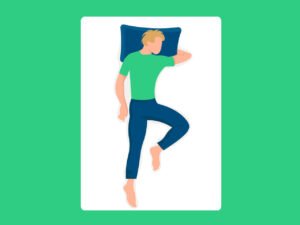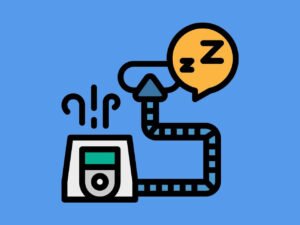This is an easy guide on how to sleep with headphones.
Some of the reasons you might like to sleep with headphones are:
- To be able to sleep in a noisy environment.
- You want to relax while falling asleep.
- Listening to music can improve your quality of sleep.[1]
- You don’t want the alarm on your phone waking up your spouse.
However, the discomfort of the pressure in the ears caused by the headphones pressing against the pillow makes this experience very unpleasant.
So here, I’ll be sharing the techniques that help many people sleep with headphones comfortably, effectively, and safely with you.
How to sleep with headphones, step-by-step:
Contents
Choose the Best Type of Headsets for You
The things you should consider when deciding which type of headsets to buy are:
- Your preferred sleep position.
- The sound quality you need.
- The required level of noise cancelation – how well it blocks outside noises.
- EMF radiation and other safety considerations.
I’ll talk more in-depth about each of these factors as we go through the different types of headphones.
Air tubes
On regular wired headphones, the mobile phone radiation transmits through the wire right into your ear.
On the contrary, air tube headphones have one big advantage, which is it eliminates almost all EMF radiation.
What is EMF radiation?
Electric and magnetic fields (EMFs) grouped into one of two categories:
- Non-Ionizing – Low to mid-frequency radiation. Which is the same radiation we are exposed to every day from computers, cell phones, Wi-Fi, etc.
- Ionizing – high-frequency radiation that can damage our DNA, such as the radiation of x-rays.
Cellphones and Bluetooth headphones are sources of non-Ionizing EMF radiation.
Should you worry about Non-Ionizing EMF radiation?
There are many different opinion researchers have on whether Non-Ionizing EMF creates health risks for humans.[2]
According to the World Health Organization (WHO), there is no evidence to conclude that exposure to a standard level of electromagnetic fields is harmful.[3]
On the other hand, more than 200 scientists wrote an appeal to the WHO claiming that recent studies have shown that EMF affects humans at levels well below most guidelines.[4]
Some of those negative effects are:
- Cancer risk
- Increase in harmful free radicals
- Genetic damage
- Learning and memory deficits
According to Jerry Phillips, a professor of biochemistry at the University of Colorado, the placement of earbuds in the ear canal exposes tissues in the head to relatively high levels of radiation.[5]
You should also take into account that children absorb more doses of radiation than adults.[6]
If you want to know my opinion on this specific issue, read the next section about whether you should buy air tube headphones.
Should you go for air tube headphones?
There is no clear answer to whether you should be worried about non-ionizing EMF radiation, so I would recommend being on the safe side.
The thing is that the EMF exposure of the Bluetooth headset is 10 – 400 times lower than the EMF exposure of cell phones.[7]
That means that you should be more worried about being too close to your cell phone.
Bluetooth cordless headsets are better for that purpose than wired air tubes.
In addition, air tubes are EMF free starting from the location of the EMF filtering speaker.
Till that point, there is EMF radiation transmits through the wire.
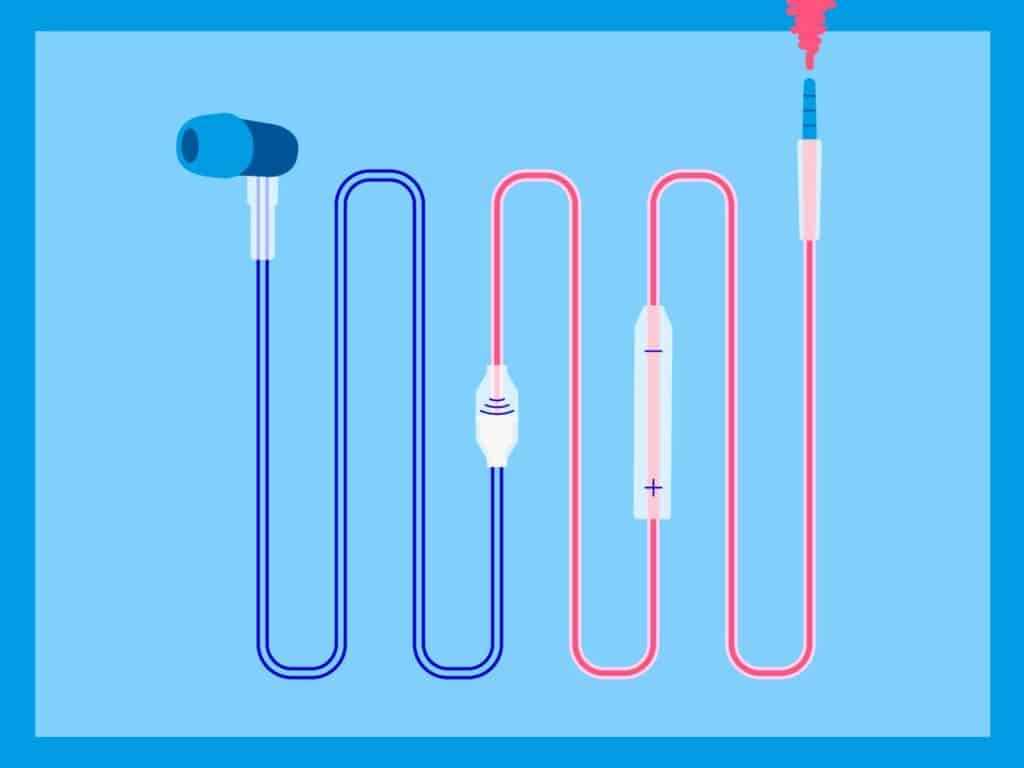
It means that if any part of your body comes in contact with the wire before the part of the EMF filtering speakers, you are still exposed to EMF radiation.
The radiation is not inside your ear canal, like with normal headphones and earbuds, but you are still exposed to EMF.
You should also take into account that usually, air tubes have poor noise cancellation and the sound quality is not as good as regular earbuds.
In conclusion, you should go for an air tube headsets only if you:
- Want to avoid EMF radiation as much as possible.
- Wish not to come in contact with the part of the wire that is located before the EMF filtering speaker.
- Sleep at least 3 feet away from your cellphone or put it on airplane mode at night.
- Don’t have a need for a high-quality sound and noise cancellation.
- Sleep on your back, have a special model for side sleepers or using a special pillow for side sleepers with headsets (which I will give details about in a few minutes).
- Feeling comfortable sleeping with wired headphones and with its safety considerations (danger of strangling from the wire for example).
Earbuds and earphones
The good thing about earbuds is that there are so many types so you can always find a model that fits your specific need.
For example:
- There are earbuds for side sleepers.
- Some earbuds include active noise canceling functionality.
- You can find many models of wireless earbuds for comfort and for staying away from cellphone radiation.
Even though some models of earbuds and earphones have a good sound quality and noise-canceling functionality, it’s not on the same level as headphones that cover your entire ear.
If you go for a wired model, it would be a good idea to put the phone on airplane mode while you sleep in order to avoid EMF radiation traveling through the wire into your ear.
Some wireless earbuds come with multiple earpiece sizes, which is great because some people need one size for the left ear and another size for their right ear.
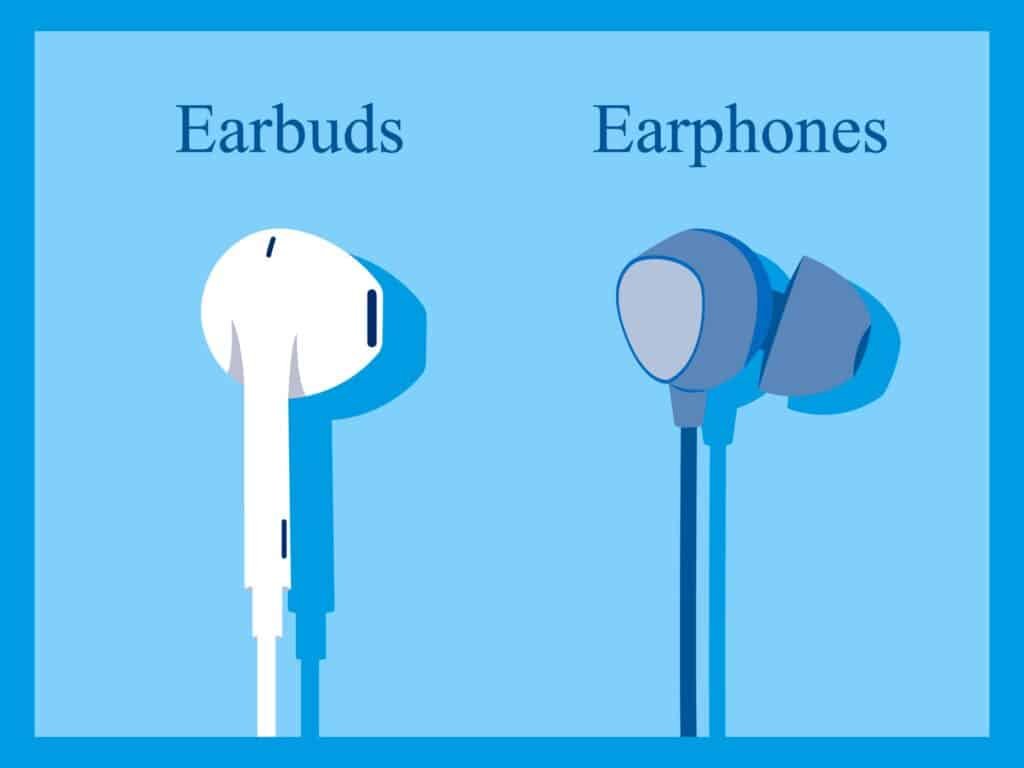
If you go on a wireless model, check the battery life length of the model you consider to buy.
The tips of the earphones should fit perfectly to the ear in order to avoid physical damage.
In-ear headphones with foam tips make it easier to fit the tips, which helps to prevent earphones from slipping away from your ear.
In conclusion, you should go for earbuds or earphones headsets if you:
- Need a decent sound quality but not more than that.
- Are satisfied with low – medium noise cancellation abilities.
- Wants to be able to sleep on your side.
Headband headphones
This is the most comfortable type of headsets to sleep with.
In addition, they can’t fall off your ears during the night as some earbuds do.
It’s actually a normal headband that you put on your forehead, only it has speakers in it.
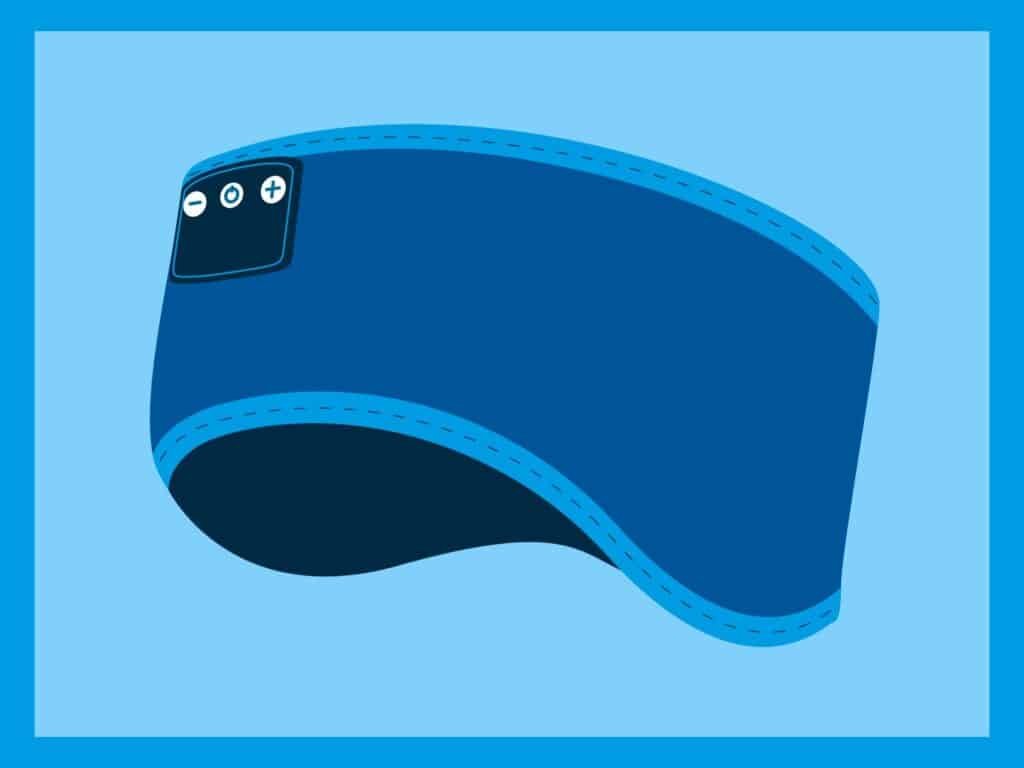
You can build one yourself, here’s how:
Although it’s simple to make them yourself, I would buy headband headphones with Bluetooth to enjoy it with more comfort and to keep my smartphone far away from me.
You can use the headband also to cover your eyes while you sleep, though in some models it will make the speakers go below your ears.
Take into account that even though the headband covers your whole ear, you might still hear some things around you.
In conclusion, you should go for Headband headphones if you:
- Are a side sleeper
- Don’t need high-quality noise cancelation
- Care the most about comfort
On-ear headphones
This type of headphones usually has the best sound quality.
Since they cover your entire ear, some models have great noise-canceling abilities.
It makes it possible to use lower volumes while using them and as a result, to decrease the chances of damaging your hearing.
Therefore, if you decide to go for on ear headphones, make sure you buy a model with an active noise cancellation functionality.

However, it’s impossible to sleep on the side while wearing on-ear headphones.
In addition, it might feel painful to wear for a long period.
In conclusion, you should go for on-ear headphones if you:
- Sleep only on your back
- Are able to wear on-ear headphones for a long period without feeling pain
- Sleep in a noisy environment
- Need a good sound quality
To sum it up
There is no perfect type of headsets for sleep.
Every type has its pros and cons.
Which type is the best for you depends on several factors you should consider.
For my situation, the best option is air tubes while the smartphone is on airplane mode and only the EMF-free part of the air tube wires encounter me.
Another thing that will affect how comfortable is to sleep with headsets is your pillow.
Which is what I’m going to talk about now.
Get the Right Pillow
In case you sleep on your back only, you can use almost any pillow to sleep with while wearing your headsets.
However, if you use to sleep with headsets on your side, you need to be pickier about the pillow you sleep on.
A good option for side sleepers is a pillow with an ear hole.
When you sleep, you lay your ear in the hole, so there is no pressure on the earplugs.

If you tend to move from side to side while you sleep, the PureComfort pillow is probably a better solution for you.
It has 2 holes, one on each side, so when you switch from sleeping on one side to the other, your ears remain pressure-free.

There is also the famous travel pillow, which is the U shaped pillow that surrounds your neck.
I wouldn’t use a travel pillow when lying in bed, but it is a good solution when you want to listen to music while sitting in airplanes, trains, buses, etc.
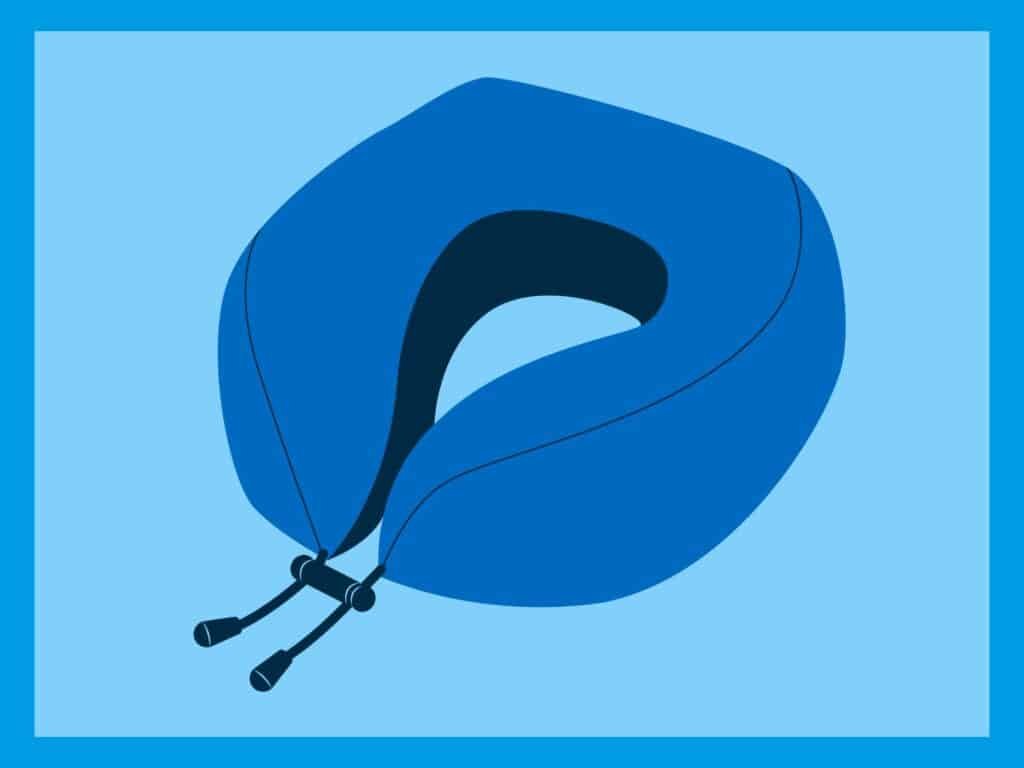
Take into account that whatever pillow you are using right now might be good enough for sleeping with headphones.
For example, I often use the anti-wrinkle pillow, YourFacePillow, and I’m able to fall asleep with earbuds while sleeping on it.
However, any pillow without a hole for the headsets will push the tips a little deeper into your ear, which might increase the risks that come with sleeping with headsets (such as hearing damage).
Those risks should not be ignored, so let’s look at the most common risks of sleeping with headsets.
Consider the Risks of Sleeping With Headphones
Sleeping with headphones has many benefits but it also comes with some serious risks.
For that reason, I sleep with headsets occasionally, only in a very noisy environment.
When it’s not very noisy, I just play pink noise through my smartphone speaker while it’s on airplane mode. It does the job.
Some of the risks of sleeping with headsets that you should pay attention to are:
Damage to your hearing
Hearing loss happens slowly and subtly. We acknowledge the damage only after it is already done.
Listening to a volume of more than 85 decibels for 8 hours can cause permanent damage to your hearing.[8]
It’s the same noise level of heavy traffic or a noisy restaurant.[9]
Many headsets can go over 100 decibels and even if you use a low volume, you might accidentally turn up the volume while you sleep.
Ringing or muffing sounds after listening to music is a sign of hearing significantly damage.
In case you notice this sign, it means the volume you listen to is way too high and you must reduce it.
Ringing or muffing sounds after listening to music is a sign of hearing significantly damage. Share on XHow to sleep with headphones while minimizing the risk of hearing loss
- Don’t go over 60% of the maximum volume of your headsets.
- Aim for a noise level of a normal conversation (60 decibels).
- Use apps that allow you to lock the volume of your device, so you won’t raise the volume while you sleep.
- Use a headset with active noise canceling functionality to reduce the need for high volume.
- Alternate nights of wearing headsets and not wearing them.
Wax buildup
The headsets block the air circulation in your ear, which can cause wax build up in your ear canal.
In addition, the earbuds trap sweat inside your ear and avoid the wax to be cleaned out of the ear canal.
Since the earbuds push the wax into your ear canal and not letting wax to be cleaned out of the ear, the wax buildup is occurring.
As a result, you might experience some temporary hearing loss, which over time might become permanent damage.
You also increase the vulnerability of the ear to infections.
If at any point you experience pain or believe that your hearing is damaged, you should consult with an ENT specialist immediately.
How to reduce the damage of wax buildup caused by sleeping with headsets
- Do not push the earbuds too far in.
- Use headsets only when they are necessary. Alternate nights of wearing headsets and not wearing them.
- If you suffer from wax buildup, let a doctor remove it or you can try using eardrops. Do NOT clean your ears using cotton swabs.
- Once a week, clean your earbuds while they are off and disconnected from your device. Here’s how to clean them:
Otitis externa
Prolonged use of headphones, especially when they are too deep in the ear canal, can irritate the ears and cause too much moisture to accumulate in the ear.
As a result, an inflammation call Otitis externa can occur.
Symptoms might include pain (also in the outer ear), redness, diminished hearing, swelling, and excessive itching.
How to reduce the chances of developing otitis externa
- Avoid as much as possible to insert things (such as cotton wool buds or your fingers) into your ear, as this can damage the sensitive skin in your ear canal.[10]
- Avoid water or shampoo from entering your ears when you take a shower.
- Do not push the earbuds too far in.
- In case you already suffer from otitis externa, your doctor can prescribe eardrops that usually improves the symptoms within a few days.
Necrosis
The pressure of your earbuds against your sensitive skin in the ear might cause trauma or infection, which might result in necrosis.
Necrosis means the death of cells in living tissue caused by external factors.[11]
It might cause hearing loss, gangrene, removal of part of the ear, or removal of the whole ear.
Necrosis is not a common phenomenon; however, it’s important that you’ll be aware of it.
How to sleep with headphones while reducing the risk of necrosis
- Use a pillow with a hole for the ear, so the pillow won’t push the earbuds too hard against your ear.
- Make sure your earbuds fit well.
- Do not sleep with headsets every night.
- In case you suspect that your ears been damaged, consult your doctor immediately.
Some other serious risks
In addition to the risks I mentioned above, sleeping with headsets has some more risks:
- Strangulation by headphone cords
- You might not be able to hear what’s happening around you (an alarm, a burglar, etc.)
- Some on-ear headphones might get too hot if you turn on your side while sleeping
In conclusion…
Sleeping with headsets include many risks that you must take into account.
This is why many ENT doctors say that you should never sleep with headphones.
However, I do sleep with headphones when I am in a very noisy environment.
I believe that the health consequences of not being able to sleep are greater than those of sleeping with headphones.
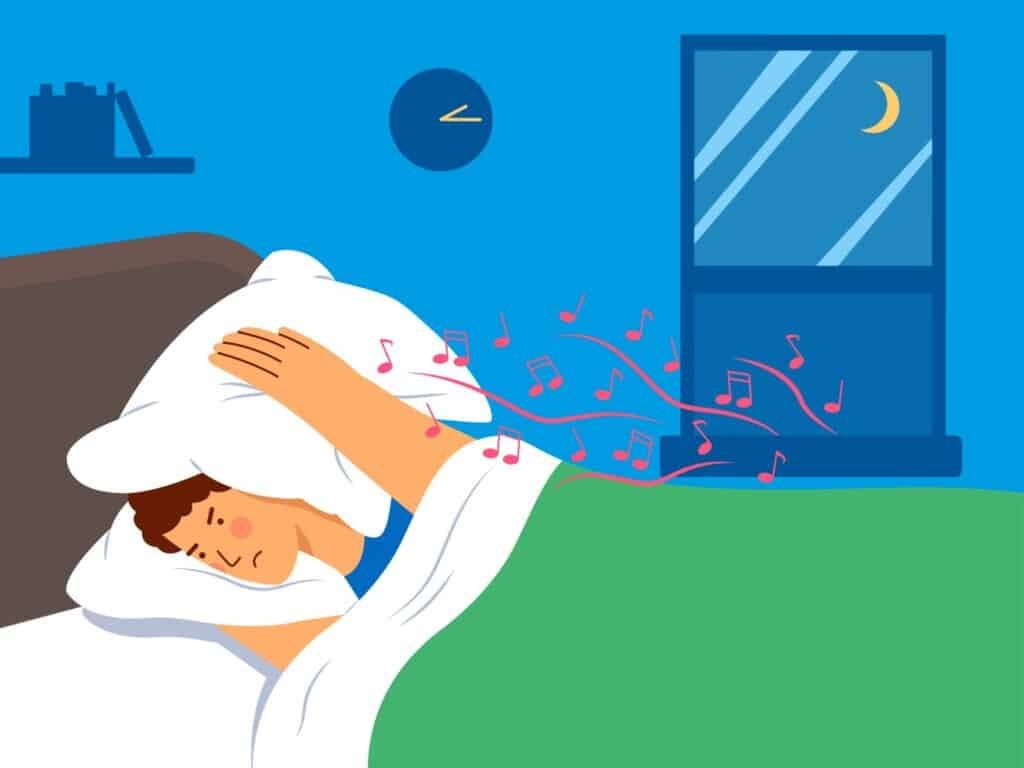
Since I sleep with headphones only occasionally and I follow the safety rules I mentioned above, in my humble opinion, my ears should be fine.
In case you want to sleep with headphones every night, it would be a good idea to consult your doctor.
Now that you know what the risks are, it’s time to move to the final step of sleeping with headphones.
View this post on Instagram
Play Music that Will Improve Your Sleep Quality
Not every type of music will help you sleep.
Playing your favorite music makes you feel more relaxed, but also might cause your brain to release dopamine,[12] which can make you feel alert.
Another example of music that might disrupt your sleep is music that triggers your strong emotions.
Music and sounds that can improve your sleep quality are:
Classical music
Not only that classical music can help your sleep, but it can also help your learning.
Playing classical music by Chopin, Beethoven, and Vivaldi, to students during studying and sleeping, improved next-day performance by 18%.[13]
Consider those when you are a day before an important exam.
Playing classical music by Chopin, Beethoven, and Vivaldi, to students during studying and sleeping, improved next-day performance by 18% Share on XASMR videos
On ASMR (autonomous sensory meridian response) videos, you often listen to women whispering into the mic and camera with a relaxing voice.
Most people feel tingles in the head, relaxation, and/or euphoria while listening to those videos.[14]
There are millions of people watching on YouTube ASMR videos like this one:
Data obtained shows that engaging with ASMR videos can also improve symptoms of pain and depression.[15]
Pink noise
This one is my favorite!
Pink noise is a random noise having equal energy per octave.[16]
It reminds the sound of a waterfall.
Researchers found that steady pink noise improves sleep quality.[17]
I sleep with pink noise every night and I can feel its impact on my sleep quality.
White noise
White noise is a random signal having equal intensity at different frequencies.[18]
It’s a less pleasant noise than the pink noise but better at masking environmental noises.
The white noise reminds the sounds of a fan or an airplane.
According to 2017 research, white noise can also minimize sleep-onset insomnia.[19]
In another study, playing white noise to neonates made 80% of them to fall asleep within 5 minutes.[20]
Nature sounds
In a study, participants who listened to nature sounds at 60 – 70 decibels had a better sleep quality than the control group.[21]
Nature sounds include a variety of rain, ocean, birds, wind, forest, waterfall, and river sounds.
Nature sounds can also help you to recover from psychological stress[22] and to help you relax.[23]
Sedative music
Playing sedative music can improve your sleep quality, lengthen your sleep duration, shortened your sleep onset, and decrease your sleep disturbance.[24]
Sedative music can also help you to reduce stress,[25] to feel more contented, and to reduce the detrimental effects of frustration on performance.[26]
Final Words…
Sleeping with headphones should not come at the cost of compromised comfort.
However, some people don’t really know how to sleep with headphones properly.
Therefore they are:
- Unable to sleep in a noisy environment.
- Can’t sleep with headphones comfortably and without breaking them. Especially side sleepers.
- Might feel anxious during the night.
If it describes your situation, I hope you find this definitive guide about how to sleep with headphones helpful.
p.s.
Do you want your friends and followers to know the best practices about how to sleep with headphones, and to help this blog to grow at the same time?

